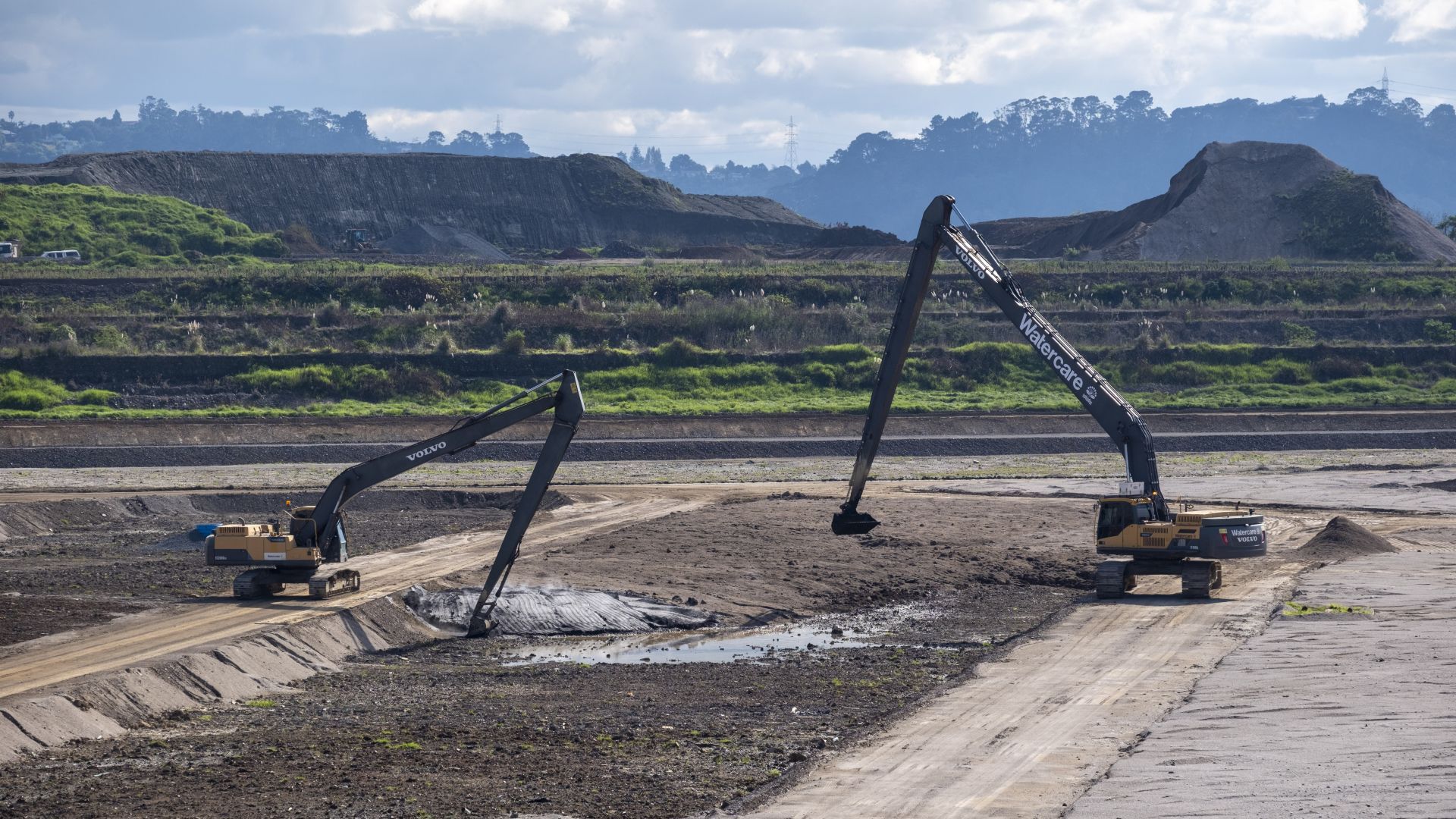
Auckland’s biosolids challenge: Watercare encourages people to join the conversation
29 October 2025Over the next year, Watercare will be exploring options for disposing of biosolids beyond 2035, and to help guide its decision making, the company wants to hear what Aucklanders value most.
Biosolids are the soil-like ‘leftovers’ from the wastewater treatment process. Part of it comes from treated human waste (poo), but it’s also made up of the micro-organisms that help clean wastewater. These bugs break down carbon, nitrogen, and phosphorus. After treatment, the remaining material goes through a digestion process (a bit like the food in our stomach). What’s left is called biosolids.
Head of wastewater planning Andrew Deutschle says all of Auckland’s wastewater treatment plants produce biosolids.
“We have a range of options for disposing of biosolids, including trucking them to certified commercial landfills, and turning them into compost for use as a fertiliser.
“At our Māngere Wastewater Treatment Plant, where three quarters of Auckland’s wastewater is treated, we are using biosolids to rehabilitate an area on Te Motu a Hiaroa, also known as Puketutu Island, that was quarried from the 1950s to the early 2000s.
“But by 2035, the rehabilitation project will be complete, and Auckland will need a reliable solution in place capable of handling more than 175,000 tonnes of biosolids each year.”
Biosolids can be used and disposed of in several ways. While there are some beneficial re-uses, most cannot be carried out at the scale needed to handle Auckland’s biosolids.
The two primary options capable of handling the volume of Auckland’s biosolids are a new landfill, which would likely be similar to the current operation at Te Motu a Hiaroa, and high-temperature incineration. Incineration is commonly used around the world – particularly in Europe – but is not commonly used in New Zealand.
“Another option we’re exploring is land application, which involves spreading a thin layer on the surface of the soil, or injecting it into the soil,” Deutschle says. “However, this would need to be in addition to either landfill or incineration due to the volume of biosolids Auckland produces.
“Each approach has its benefits and trade-offs – and that’s why we want to hear from Aucklanders about what they value most.
“We have lots of information on our website, and anyone can share their thoughts using our short online survey.”
To learn more, go to watercare.co.nz/biosolids.